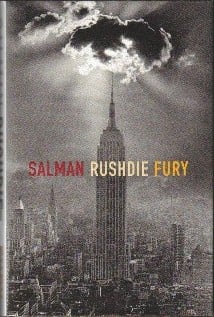Readers of Salman Rushdie’s novels know that he has been a prolific writer over the last few decades. Not only have his books received heaps of international critical acclaim, but they have also been loved by readers across the globe. So here’s where we have to tell you that the title of this article is a bit of a misnomer: only one of Rushdie’s novels has ever been adapted for the silver screen. In all these years, Rushdie’s works simply have not been remade as feature films. And it took more than 30 years for his novel, Midnight’s Children (1981), to reach the cinema. When we learned that Midnight’s Children was to become a film directed by Deepa Mehta, we were excited! But at the same time, we wondered: how might anyone turn a novel so immersed in the magical realism tradition into a work of cinema?
Adapting Midnight’s Children (1981) for the Cinematic Screen
 As it turns out, the film version of the novel offers, as a review in The New York Times suggests, an alternate story of the “Birth of a Nation” in ways that both reflect and remake the novel written more than three decades prior. The review begins with praise for both Rushdie and Mehta: “To do cinematic justice to Salman Rushdie’s novel ‘Midnight’s Children,’ it would take a razzle-dazzle entertainer with Bollywood flair and a literary bent, someone equally at home with comedy and allegory, ghosts and little snot-nosed boys, Indian history and Indian myth.” For many critics, Deepa Mehta was just the person to direct this film.
As it turns out, the film version of the novel offers, as a review in The New York Times suggests, an alternate story of the “Birth of a Nation” in ways that both reflect and remake the novel written more than three decades prior. The review begins with praise for both Rushdie and Mehta: “To do cinematic justice to Salman Rushdie’s novel ‘Midnight’s Children,’ it would take a razzle-dazzle entertainer with Bollywood flair and a literary bent, someone equally at home with comedy and allegory, ghosts and little snot-nosed boys, Indian history and Indian myth.” For many critics, Deepa Mehta was just the person to direct this film.
Mehta is an Indo-Canadian screenwriter and director who was born in Amritsar in 1950, just across the border from Pakistan. Like Rushdie, she was born onto the Indian subcontinent at a time in which the notion of Partition was a new one, and the violence of decolonization was palpable. Mehta spent much of her early life in and around Delhi, India before moving to Canada in the early 1970s. Prior to directing Midnight’s Children, Mehta already had experience adapting works concerning the India-Pakistan Partition. Indeed, her 1998 film Earth—part of a three-film trilogy that received critical acclaim—actually was an adaption of the Pakistani novelist Bapsi Sidhwa’s book Cracking India (1991). Sidhwa’s novel also deals with the making and remaking of national history at the moment of the India-Pakistan Partition, but in a mode much different from Rushdie’s work.
Turning Magical Realism Into Cinematic Realism
 There are major differences, to be sure, between the novel and film versions of Midnight’s Children. Most notably, many of the magical realism elements disappeared as the book made its way to the screen. In an interview with the Indian journalism outlet News Laundry, Rushdie discusses the ways in which he and Deepa Mehta (Rushdie wrote the screenplay for the film, by the way) dealt with magical realism onscreen.
There are major differences, to be sure, between the novel and film versions of Midnight’s Children. Most notably, many of the magical realism elements disappeared as the book made its way to the screen. In an interview with the Indian journalism outlet News Laundry, Rushdie discusses the ways in which he and Deepa Mehta (Rushdie wrote the screenplay for the film, by the way) dealt with magical realism onscreen.
“One of the big conversations that Deepa [Mehta] and I had in making the film was ‘how big should the noses be?’” he explained to the interviewer. Rushdie goes on to detail how, in the film adaptation of Midnight’s Children, there were three prosthetic noses used for Saleem [the narrator and protagonist of the novel], but “we had to really discuss how much to exaggerate the nose. Should we make it like Cyrano de Bergerac? . . . . In the book it’s much bigger.”
The interviewer notes that, in the novel, Saleem’s nose has rubies and diamonds coming out of it—one of the many markers of the novel’s inflection with elements of magical realism. Considering the depiction of Saleem’s ruby- and diamond-inlaid nose for the film, Rushdie elucidates, “Sometimes things that work on the page don’t work in an image.” And, when putting magical realism into a cinematic space, the author explained that, “in the end, we thought in the end we wanted to keep it within the bounds of what was anatomically possible.”
How might the film reflect a new vision of the history of the Indian subcontinent? Considering the ways in which personal and national histories “leak into each other” in the novel, Rushdie reflected on emphasizing that practice while writing the screenplay: “It’s partly that I was always interested in history. You know, I was a student of history . . . . That subject of how does the great sphere of public events, how does that affect the individual ordinary lives of people . . . . And what is the relationship between us, between the human scale and the giant scale.” After all, Rushdie clarifies, “Saleem believes himself to be responsible for history.”
Watch the full interview with Rushdie below, and if you haven’t read Midnight’s Children, we recommend picking up a copy today to begin your journey into the magically real world of Saleem and post-Partition, post-Independence India.









